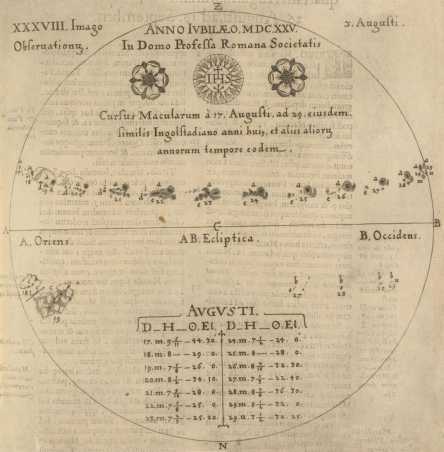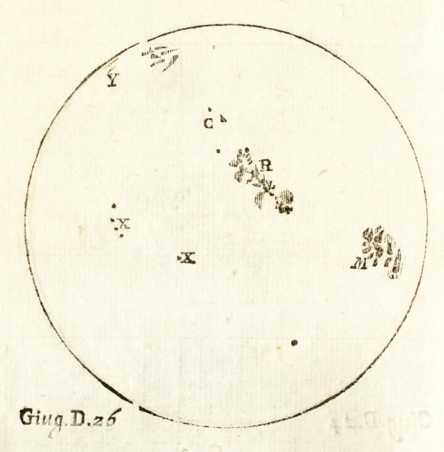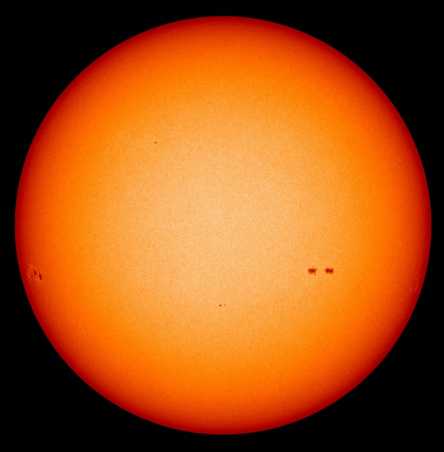The sun and sunspots
In January 1612 the Jesuit priest Christoph Scheiner published three letters on sunspots under the pseudonym "Apelles". He addressed them to the magistrate Marcus Welser in Augsburg, likewise a member of the Accademia dei Lincei. Scheiner announced in these letters his discovery of sunspots, assuming they were small planets that orbited the Sun. Galileo, who had been a member of the Accademia dei Lincei since 1611, also published observations on sunspots in Rome in 1613 (the "Lettere solari"). He addressed his observations in the form of letters to Marcus Welser.
Lettere solari (1613)
Unlike Scheiner, Galileo asserts in the Lettere solari that sunspots are part of the surface of the Sun and from this he deduced that the Sun orbited around its own axis. He also referred to the transience of sunspots. Thus Galileo proved that emergence and decay occurred on the Sun.
Observation of sunspots with the helioscope

In the years around 1630 Scheiner changed his mind about the nature of sunspots. He now no longer regarded them as small planets but as integral parts of the Sun. His idea of the Sun at that time is handed down to us by the illustration by Attanasius Kircher, published in 1664. It is based on statements by Scheiner and Galileo from 1635 and shows a distant relationship with the most advanced infrared images of sunspots.


